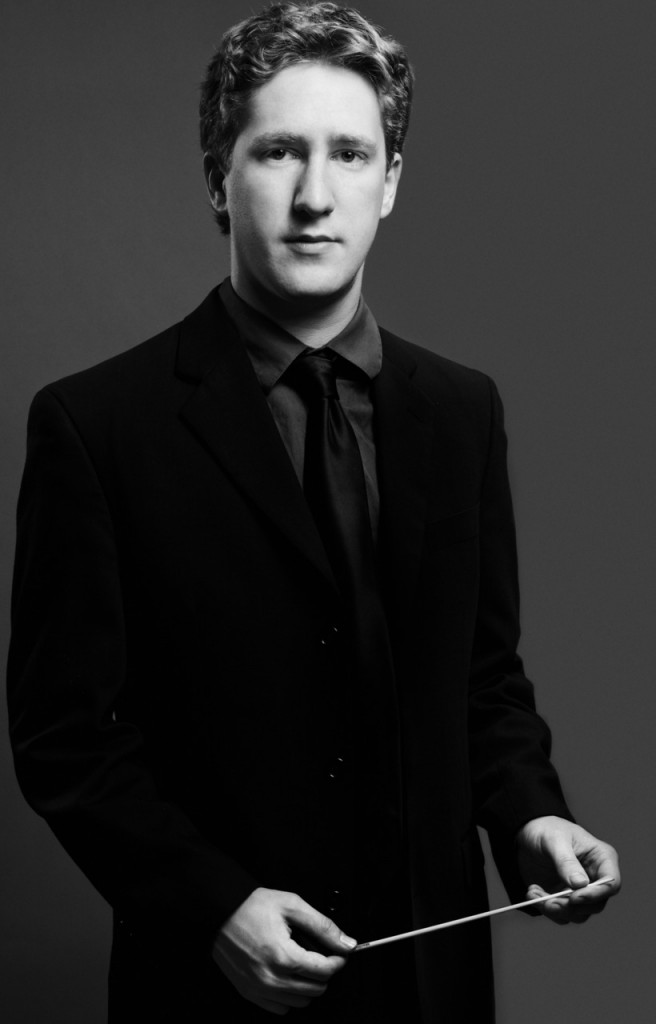Weilerstein makes admirable podium debut with Philharmonic

Joshua Weilerstein conducted the New York Philharmonic in music of Golijov, Mendelssohn and Dvorak Saturday night.
Osvaldo Golijov has secured a place for himself as one of the major composers of the last two decades, and it’s easy to understand why. His music is hip with a myriad of musical influences, but also edgy and modern. It gives a concert that little kick, while still being accessible. The New York Philharmonic are clearly admirers of Golijov, having opened their season this year with his Azul.
Last Round, which the Philharmonic performed Saturday night in a concert led by assistant conductor Joshua Weilerstein, is a sumptuous tango-infused work for string orchestra that was conceived as an “idealized bandoneón,” to use the composer’s own words. The first movement, titled “Movido, urgent – Macho cool and dangerous,” is almost violent at times. It opens with reduced forces, and builds to a point where all bows are flying in a kind of stylized dance. But even as Weilerstein swayed to the music and vigorously portrayed the swelling of the tango, the players’ energy didn’t always match his. His movements sometimes seemed gratuitous, though they might not have, if the players had come along with him for the ride.
The second movement, “Muertes del angel”, was where the musicians really seemed to fall short. A slower dance, the music begs for a little more luxuriousness, more sliding of the strings, and more rubato, especially in the violin solos where there could have been more freedom. All the elements were there, but a tango is ultimately sexy, and these players looked unconvinced and sounded as if they needed to shed their inhibitions.
Following the Golijov, Arabella Steinbacher took the stage for Mendelssohn’s Violin Concerto in E minor. From the opening phrase, it was clear this would not be a rote performance. The opening phrase had a lilt, and much dynamic nuance. For any other piece, the liberties might have seemed too much for an opening statement, but here it was refreshing.
In the main theme of the concluding vivace, Steinbacher ran slightly ahead of the orchestra, her bow jumping off the strings in the scherzo-like music and pulling the orchestra along with her. A violinist himself, Weilerstein followed her closely. At times, she was almost flippant as she threw away some of the short gestures of the third movement, but this also seemed to propel the music forward. It was stimulating, and she was clearly enjoying herself.
Antonín Dvořák’s Symphony No. 8 doesn’t have quite the public adoration that the Ninth Symphony holds, but still encompasses the Czech sound that audiences love. Throughout, Weilerstein procured a thick sonority from the orchestra that was rich and sounded idiomatic. In the opening waltz of the third movement, the rustic heaviness on the downbeats gave way to a lighter feeling in the folk dance.
During the slower middle section of the final movement, Weilerstein was in no hurry to give it all away – the music-making was relaxed, which allowed the large finish to adequately drive it all home. But even through the bohemian folk thickness and the bombastic ending, there was always a sense of ease – which was fairly remarkable given this was Weilerstein’s first subscription concert with the Philharmonic since he became an assistant conductor in 2011. But Weilerstein proved himself more than capable, and a gifted young conductor of significance.
This program will be repeated 7:30 p.m. Tuesday. nyphil.org; 212-875-5656.






